Angle of Incidence - Key Pointers, Definition, Formula, FAQs
Light behaves in interesting ways when it strikes a surface, and one of the most important concept that helps us understand this is the angle of incidence. This article explains what the angle of incidence means in very simple words and how it is used to study the reflection and refraction of light. Students will learn about the incident ray, reflected ray, point of incidence and the normal all basic terms needed to understand how light interacts with mirrors and transparent materials. In this article students will also learn how the angle of incidence is related to the angle of reflection and angle of refraction.
This Story also Contains
- Key Pointers
- What is Angle of Incidence?
- What is Incidence Ray?
- What is Angle of Reflection? Define Angle of Reflection
- Relation Between Angle of Incidence and Angle of Reflection
- What is Angle of Emergence?
- What is Angle of Refraction?
- The angle of refraction is the angle formed by the refracted beam and the normal at the point of incident.
- Relation between Angle of Incidence and Angle of Refraction
- Solved Examples of Angle of Incidence
Key Pointers
The following are some crucial points to help you grasp the notion of angle of incidence.
1. The incident ray is the light ray that strikes the polished surface.
2. The reflected ray is the ray that is reflected away.
3. The point of incidence is the location where light strikes a surface.
4. The normal is a line that is drawn perpendicular to that location.
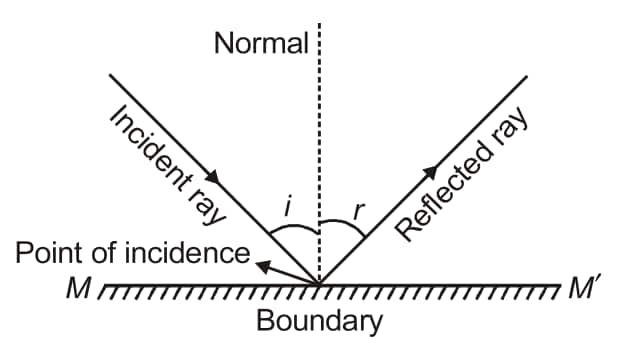
What is Angle of Incidence?
Angle of Incidence is the angle between the incident ray (incoming ray of light) and the normal drawn at the point where the ray strikes a surface.
Angle of Incidence is denoted by i.
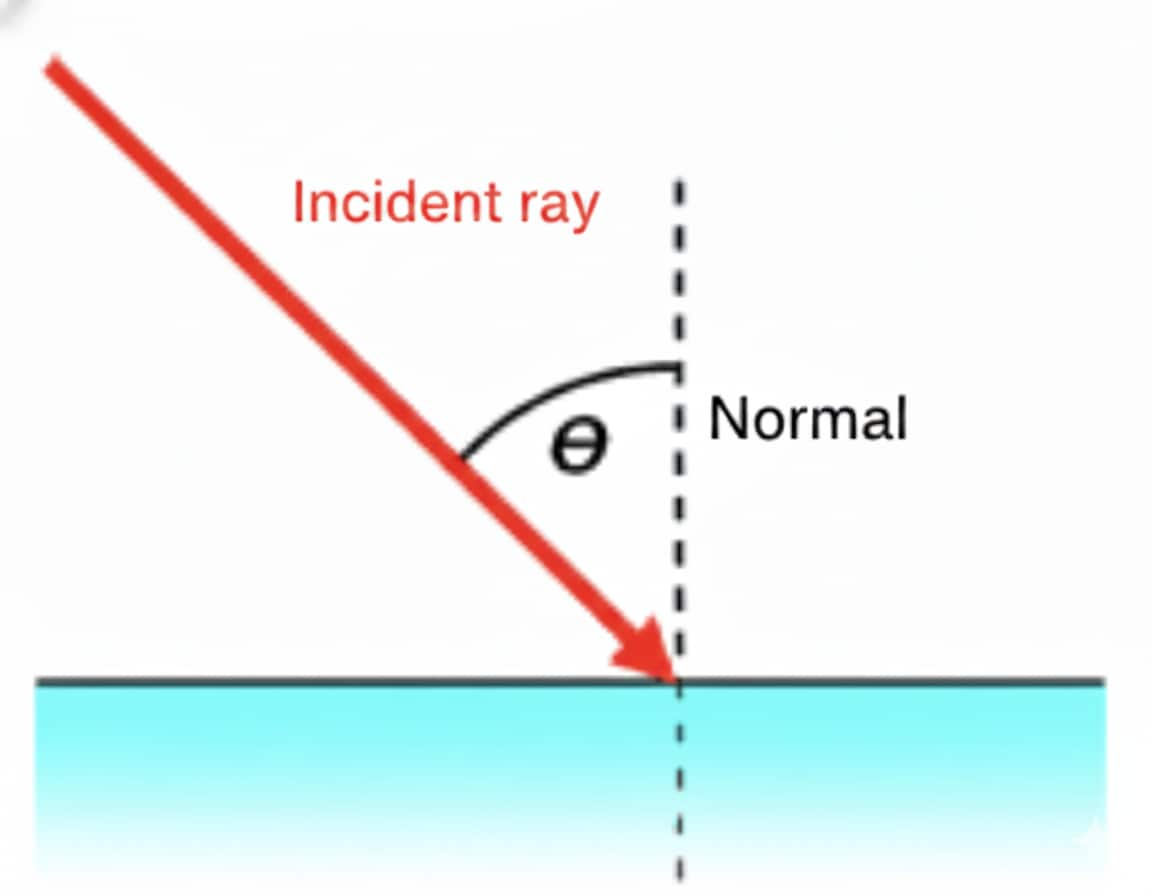
Here are some crucial aspects to remember when it comes to incidence angle:
-
The incident ray is the ray that strikes the mirror's smooth surface initially.
-
The reflected ray is one that travels away from the incident ray's point of origin.
-
The point of incidence is the point at which a beam of light travels.
-
A perpendicular line drawn from the same point is known as a normal.
Also read -
- NCERT Solutions for Class 11 Physics
- NCERT Solutions for Class 12 Physics
- NCERT Solutions for All Subjects
What is Incidence Ray?
A light ray that strikes a surface is called an incident ray. The ray that depicts the light reflected by the surface is the reflected ray that corresponds to a specific incident ray. The angle of reflection is the angle formed by the surface normal and the reflected beam.
What is Point of Incidence?
The point of incidence will be where the beam of incidence hits the mirror. Now let's have a look at the normal parameter. The normal is a line that intersects the mirror surface at a right angle. Normally, this line is drawn at the point of incidence.
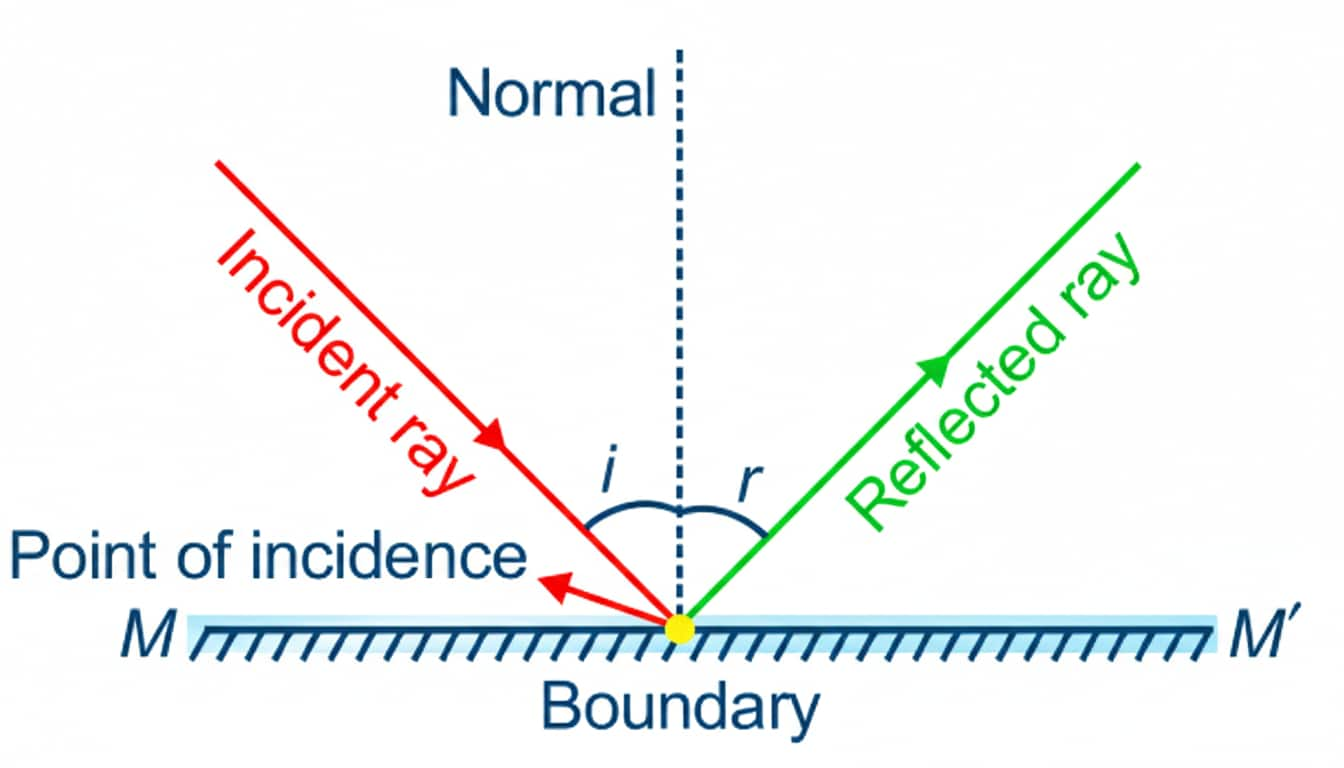
What is Angle of Reflection? Define Angle of Reflection
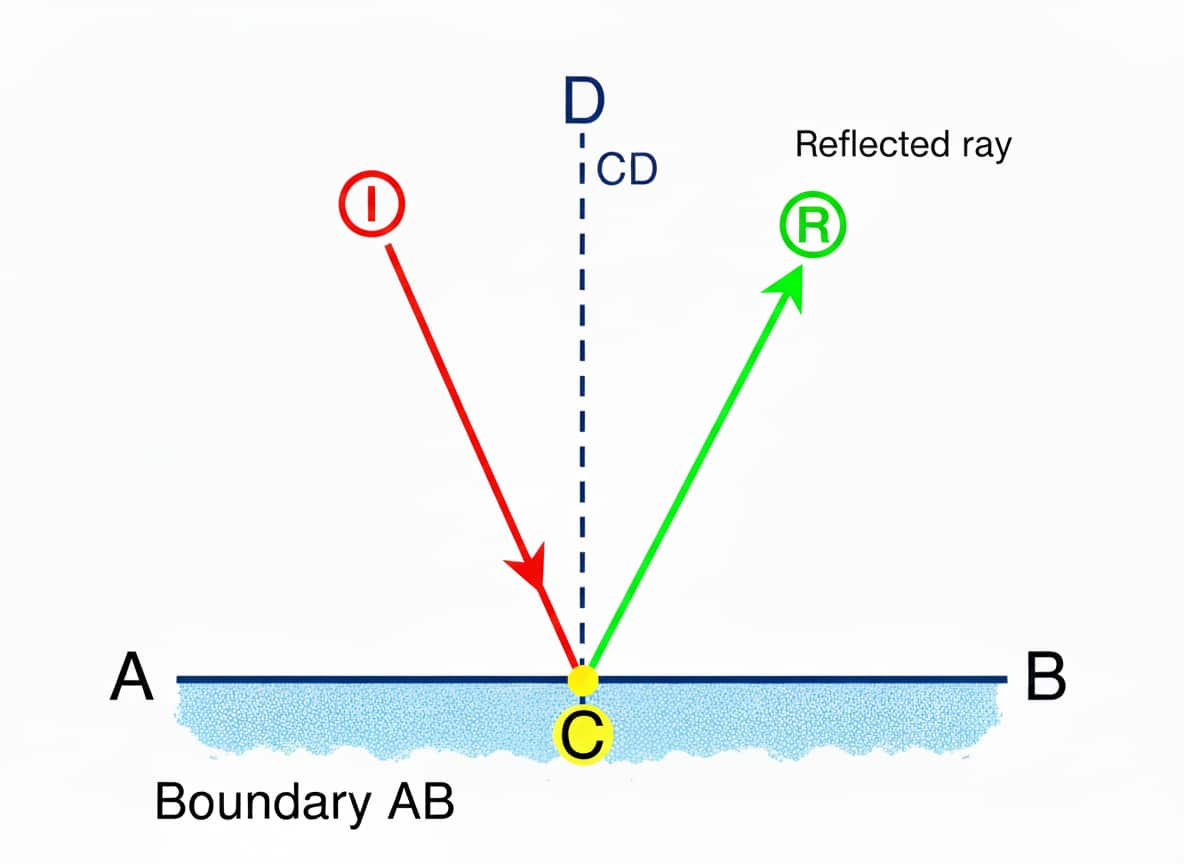
Angle of Reflection: The angle formed between the normal and the reflected ray at the point where the light ray strikes the surface is called the angle of reflection. It is denoted by r.
NCERT Physics Notes :
Relation Between Angle of Incidence and Angle of Reflection
The relation between the angle of incidence and the angle of reflection is given by the First Law of Reflection.
Law of Reflection
Angle of incidence (i) = Angle of reflection (r)
What is Angle of Emergence?
The angle of emergence refers to the angle at which light emerges from a medium (such as a glass slab with parallel sides). The ray of light travels through the air at an angle and enters the glass. As light enters the glass, it refracts or bends, then continues on and emerges at a different angle back into the air.
What is Angle of Refraction?
The angle of refraction is the angle formed by the refracted beam and the normal at the point of incident.
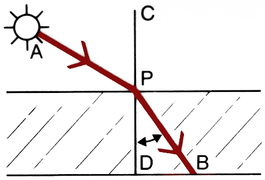
Also read,
Relation between Angle of Incidence and Angle of Refraction
The relation between the Angle of Incidence and the Angle of Refraction is given by Snell's Law.
Snell's Law
$\frac{\sin i}{\sin r}=\frac{v_1}{v_2}=\frac{\mu_2}{\mu_1}$
Where:
- $\mathbf{i}=$ angle of incidence
- $\mathbf{r}=$ angle of refraction
- $v_1, v_2$ = speeds of light in medium 1 and medium 2
- $\mu_1, \mu_2=$ refractive indices of the two media
Solved Examples of Angle of Incidence
Q.1 If the angle of incidence on a plane mirror is $40^{\circ}$, what is the angle of reflection?
Solution:
According to the Law of Reflection,
Angle of incidence (i) = Angle of reflection (r)
So,
$r=40^{\circ}$
Answer: $40^{\circ}$
Q.2 A ray of light strikes a mirror and makes an angle of $30^{\circ}$ with the mirror surface. What is the angle of incidence?
Solution:
Angle with mirror surface $=30^{\circ}$
Angle with normal $=90^{\circ}-30^{\circ}=60^{\circ}$
So,
$i=60^{\circ}$
Answer: $60^{\circ}$
Q.3 A light ray strikes a mirror at $70^{\circ}$. What angle does it make with the normal?
Solution:
Angle with mirror surface $=70^{\circ}$
Angle of incidence $=90^{\circ}-70^{\circ}=20^{\circ}$
Answer: $20^{\circ}$
Also check-
Frequently Asked Questions (FAQs)
Because the light ray chooses the shortest path to its destination, the angle of incidence equals the angle of reflection. Fermat's principle describes how light behaves. When a light ray is reflected from a plane surface, it exhibits the same behaviour. As a result, the incidence and reflection angles are the same.
The ray of light strikes a plane mirror normally, which implies the angle of incidence is 0° rather than 90°. As a result, the reflection angle is 0°.
When the angle between the incident ray and the mirror is increased, the angle of reflection decreases. Because of the glancing angle of incidence, this is the case. The angle created by the incident ray and the mirror is known as the glancing angle of incidence. In addition, the angle of incidence and the glancing angle of incidence add up to 90 degrees. As a result, as the glancing angle increases, the incidence angle decreases. Angle of incidence equals angle of reflection, as we all know. As a result, the angle of reflection is reduced.
The stated assertion is correct. In other words, the principles of reflection apply to all sorts of mirrors.
When the angle of incidence equals the critical angle in total internal reflection, the angle of reflection is 90°.